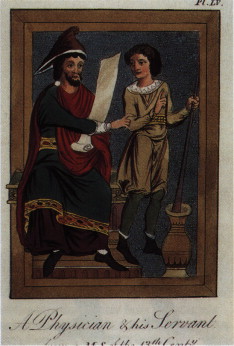
The Progression of Optics: From Ancient Times to the Telescopic Breakthrough
The seventeenth century heralded a revolutionary period in the chronology of optics, significantly influencing science, art, and mankind’s comprehension of the cosmos. The groundbreaking invention of the telescope in the early 1600s, soon followed by the emergence of the microscope, unlocked new avenues in the investigation of both the unimaginably vast and the imperceptibly small. While mirrors had been recognized and thoroughly explored since ancient times, it was the gradual development of the lens—an optical component that would transform daily life and scientific exploration—that ignited a potential paradigm shift in human history.
### The Ancient Beginnings of Lenses: Legend, Speculation, and Truth
Though the lenses we are familiar with took form during the Medieval period, certain relics from ancient times have led to discussions about primitive optical experimentation. One of the most notable examples is the “Nimrud Lens,” a roughly crafted, eighth-century BCE crystal rock found in Nimrud (modern Iraq) during 19th-century excavations. Some theorize that it might have functioned as a magnifying glass, a device to concentrate light, or even—by the more daring assertions—as a telescope eyepiece. Nonetheless, thorough scientific examination of the Nimrud Lens indicated that, if used as a lens, it would have been rather ineffective due to its inferior workmanship.
There are other, somewhat more credible claims regarding lens usage in ancient times. For example, Aristophanes’ play *The Clouds* (424 BCE) alludes to a “burning glass,” a stone adept at harnessing sunlight to ignite materials. Historical figures such as Pliny the Elder also commented on the magnifying effect of water in glass orbs and the utilization of glass vases to concentrate sunlight.
Perhaps the most suggestive early reference to corrective optics can be traced to the Roman Emperor Nero, whom Pliny noted viewed gladiatorial contests through an emerald, likely shaped concavely to counteract myopia. However, such discoveries remained disjointed pieces of knowledge, lacking thorough exploration into the characteristics of lenses and their practical uses.
### The Advent of Lenses in the Middle Ages
It wasn’t until the ninth century, with the creation of the “reading stone” (Latin: *lapides ad legendum*), that lenses started to be employed in practical applications. These initial magnifiers, made from substances like rock crystal, amethyst, or smoky quartz, assisted monks and scholars in reading manuscripts—an early endeavor to mend the vision degradation associated with aging (presbyopia). Nevertheless, these basic devices were merely convex magnifiers resting flat on written texts, devoid of the intricacy and refinement seen in later optical instruments.
By the late thirteenth century, the lens had transformed into a device capable of profoundly altering human vision: eyeglasses. The exact origins of eyeglasses remain a subject of debate among historians, but many agree that early spectacles likely appeared in Venice between 1280 and 1295. According to Swiss historian Rolf Willach, the invention of corrective lenses might have been a fortunate accident: artisans cutting precious stones for religious artifacts discovered their refractive qualities when positioned over text and began to experiment with intentionally ground quartz lenses.
### Spectacles and the Rise of the Crafting Optician
As eyeglasses became more fashionable throughout the fourteenth and fifteenth centuries, lenses for both farsightedness (hypermetropia) and subsequently nearsightedness (myopia) became readily accessible across Europe. Venice, the hub of high-quality glass and lenses, capitalized on this trade. The knowledge of glass-making and lens crafting was so highly prized that divulging these secrets could result in the death penalty within the Republic of Venice.
Despite the proliferation of spectacles, the innovation and refinement of lenses remained strictly an artisanal affair, grounded in no scientific or optical theory. Spectacle craftsmen and lens grinders produced their wares through experimentation, creating lenses of various focal lengths—which were utilized without a thorough understanding of the principles governing light refraction.
Individuals purchased spectacles according to rough age categories or tested various lenses until they discovered one that improved their vision. Two trailblazers, Francesco Maurolico and Johannes Kepler, would later address this gap by establishing the first optical theories concerning vision and lenses.
### Francesco Maurolico and the Precursors of Optical Theory
Although eyeglasses were extensively utilized by the fourteenth century, it wasn’t until the mid-sixteenth century that any coherent theory of optics began to take shape. Francesco Maurolico (1494–1574), an Italian mathematician and astronomer, extensively examined lenses and their behavior with light. His crucial works *Photismi de lumine et umbra* (1521) and *Diaphana* (completed in sections between 1523 and 1552) provided early insights into the